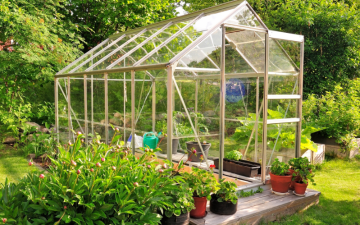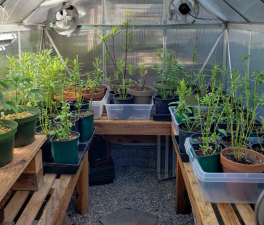Greenhouse Gardening: What You Need to Know Before Starting
Setting up a small home greenhouse can be an exciting adventure, allowing gardening enthusiasts to cultivate and enjoy plants year-round. A greenhouse not only protects plants from the elements but also creates an ideal microenvironment to help them thrive.
Setting up a small home greenhouse can be an exciting adventure, allowing gardening enthusiasts to cultivate and enjoy plants year-round. A greenhouse not only protects plants from the elements but also creates an ideal microenvironment to help them thrive.
Greenhouse Location and Size
Choose a location that receives ample sunlight, preferably in a south-facing area to maximize sunlight exposure. The size depends on your yard space and the amount of plants you plan to grow. A 6-foot by 8-foot greenhouse is sufficient for an enthusiastic amateur gardener, while larger spaces can accommodate more or larger plants.
Construction-wise, modern home greenhouses come in a variety of materials and designs, from plastic to glass, and from wood to metal frames. For beginners, corrugated plastic or polycarbonate are good choices for coverings, as they are both durable and allow for good light transmission. Additionally, ensure adequate ventilation in the greenhouse, perhaps installing operable windows or overhead ventilation to regulate temperature and humidity.

Controlling Temperature
Some tropical plants require high temperatures, which means additional heating may be necessary during colder months, even at night. Greenhouse heating can be achieved through various methods, including electric heaters, gas heaters, or solar heating systems. Monitoring temperature is crucial; use a thermo-hygrometer to track environmental readings and adjust as necessary.
Humidity control is also crucial. Methods for achieving the right humidity include using a sprinkler system, damp mats, or hand misting. Excessive moisture increases the risk of disease, so providing adequate airflow to prevent plant leaves from becoming wet is crucial.
Daily Care and Management
- Watering
During hot summer months: Water in the morning or evening, avoiding direct sunlight that can cause rapid evaporation.
Winter: Water less frequently to prevent root frostbite.
Adhere to the "wet when dry" principle: Water thoroughly when the soil is dry, but avoid standing water.
- Lighting and Ventilation
Full-sun plants (such as succulents and tomatoes) need to be placed in full sun.
Shade-tolerant plants (such as pothos and ferns) can be placed in a less sunny corner.
Proper ventilation: This helps plant growth and prevents pests and diseases. 3. Pest and Disease Control
Natural control methods include spraying leaves with chili pepper spray or soapy water to repel pests.
Keep it clean: Regularly trim dead leaves to reduce the chance of pathogens growing.

Soil
Choosing the right soil mix is crucial to providing a suitable growing medium for your plants. Most gardening experts recommend using a homemade soil mix, which typically consists of a mixture of garden soil, perlite, compost, and sand. The right soil mix should ensure good drainage while retaining sufficient nutrients and moisture.
In addition, given that plant growth is seasonal, a strategic planting plan can be used to maximize greenhouse space. Rotating plant species maintains soil nutrients and biodiversity while preventing the accumulation of diseases and pests.
